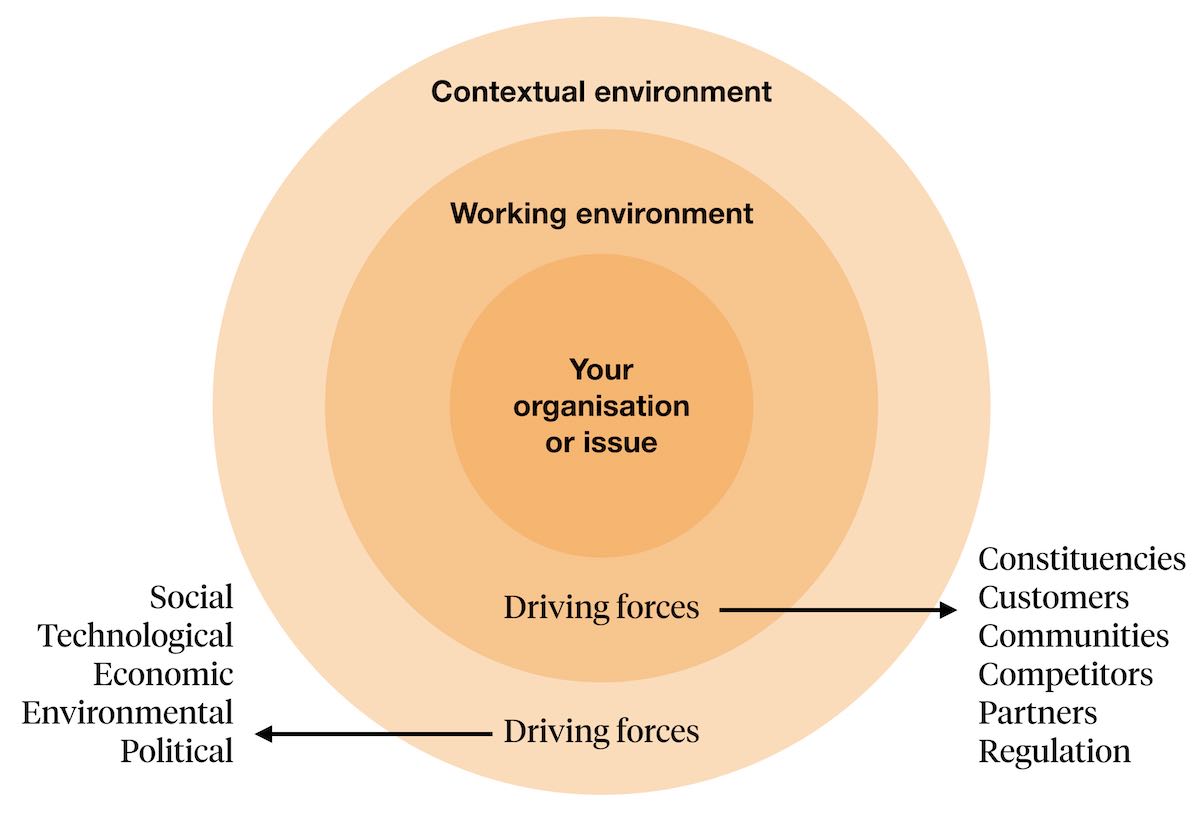Scenario assessment
Exploring possible futures.
- A few hours
Scenario planning uses stories of what could happen in the future with diverse stakeholders in order to better understand the future possibilities. It motivates people to challenge the status quo, or get better at doing so, by asking “What if?” Asking “What if?” in a disciplined way allows participants to rehearse the possibilities of tomorrow, and then to take action today, empowered by those provocations and insights.
The multiple stakeholder partnerships guide produced a useful short scenario planning tool, reproduced here.
The technique of scenario planning has been used by organisations for decades to prepare and adapt themselves for future scenarios outside their control
Scenarios should not be mistaken for predictions. Scenarios are provocative and plausible stories about how the future might unfold. Scenarios consist of a range of multiple stories or hypotheses to capture a range of future possibilities, both good and bad. They include diverse external issues, which might evolve, such as the future political environment, social attitudes, regulations and the future economy. We call these external future issues ‘driving forces’.
Scenario planning consists of the process through which scenarios are developed and how they are used to inform strategic planning. The guiding principles in scenario planning are:
- A long-term view: Scenario planning requires looking beyond immediate demands or urgent needs.
- An outside–in view: Scenario planning considers those aspects which stakeholders can control – thinking from the inside- but also considers external influences, which are outside of your control but have a great influence in how the future of your project might unfold – outside-in thinking.

A framework for outside-in thinking. Source: Scearce (2004:13)
- Step 1
- In this phase, the issue at stake has to be clarified. Take into account the factors and institutions that are supportive or constraining the issue. From these, identify the driving forces of the issue.
- Step 2
- Synthesizing the driving forces. What are the implications (issues and opportunities) of the driving forces for the different actors?
- Think of the most important actors;
- For each actor, brainstorm about a few implications: challenges, issues, opportunities caused by the driving forces.
- Step 3
- Prioritize the driving forces by two criteria:
- The degree of importance of the driving forces to the issue at stake;
- The degree of uncertainty surrounding those forces. Continue by identifying the two driving forces which are most important to the issue at stake and two that are the most uncertain. These four factors will be the foundation for your scenario set.
The two forces should not be too closely dependent on each other, and have to be able to go in contrasting directions in the future.
- Step 4
- Make the ‘scenario matrix’ based on the two identified driving forces, and the ‘critical uncertainties’. One force will constitute the X-axis and the other the Y-axis. Every quadrant of the matrix represents one scenario. Develop all 4 scenarios by discussing the following questions:
- What happens in each scenario?
- What policy options are available for each scenario?
- Which interventions are needed to prepare for each scenario?
After the workshop, write-up each scenario - it should read like a story imagined from that particular scenario. You could also consider illustrating each scenario. The final step is to go back to the group and reflect on the four scenarios and discuss their implications for the project.
More information
- Scenario Planning, Wageningen Centre for Development Innovation.
- Overcoming obstacles to effective scenario planning, McKinsey and Company.